Homepage / News Details
Why chlorine is added to water treatment?
- Categroy:News
- Author:
- Origin:
- Release Time:2020-09-25 15:24
- Views:
【Summary】In the effluent stage of tap water and sewage treatment plants, chlorination disinfection is widely used to kill bacteria and viruses in the water. In the treatment of industrial circulating cooling water, chlorine is also used to sterilize and remove algae. In the process of cooling water circulation, due to the evaporation of part of the water, the nutrients in the water are concentrated, and bacteria and other microorganisms will multiply in large quantities and easily form slime dirt. Too much slime dirt will lead to pipe blockage and corrosion.
Why chlorine is added to water treatment?
【Summary】In the effluent stage of tap water and sewage treatment plants, chlorination disinfection is widely used to kill bacteria and viruses in the water.
In the treatment of industrial circulating cooling water, chlorine is also used to sterilize and remove algae. In the process of cooling water circulation, due to the evaporation of part of the water, the nutrients in the water are concentrated, and bacteria and other microorganisms will multiply in large quantities and easily form slime dirt. Too much slime dirt will lead to pipe blockage and corrosion.
- Categroy:News
- Author:
- Origin:
- Release Time:2020-09-25 15:24
- Views:
In the effluent stage of tap water and sewage treatment plants, chlorination disinfection is widely used to kill bacteria and viruses in the water.
In the treatment of industrial circulating cooling water, chlorine is also used to sterilize and remove algae. In the process of cooling water circulation, due to the evaporation of part of the water, the nutrients in the water are concentrated, and bacteria and other microorganisms will multiply in large quantities and easily form slime dirt. Too much slime dirt will lead to pipe blockage and corrosion.

Chlorination usually involves injecting chlorine into water to kill bacteria and other microorganisms, usually in bottled chlorine.
Free chlorine - Chlorine gas produces HClO and ClO- in water, and the sum of HClO and ClO- is called "free chlorine".
Among them, free chlorine has a strong killing effect on bacteria and other microorganisms, and is an effective anti-toxin component in free chlorine, so HClO is also called "effective free chlorine".
Compound chlorine -- before free chlorine has bactericidal effect, due to the water dissolved in ammonium ions, organic various impurities, these impurities will first react with free chlorine, the consumption of a part of free chlorine.
For example, free chlorine rapidly reacts with ammonium ions in solution to form monochloramine and dichloramine.
Over a longer period of time, free chlorine also reacts with organic compounds, such as proteins and amino acids, to form various organochlorine compounds.
Chloramines and organochlorines together are called combined chlorines.
Total chlorine -- combined chlorine plus free chlorine is the total amount of chlorine in the solution, called total chlorine.
Only free chlorine is an effective disinfectant in these substances, and combined chlorine has little ability to kill viruses.
Only after meeting the above consumption of chlorine needs, there will be excess free chlorine to kill bacteria.
Chlorination amount -- The amount of chlorine added during chlorination disinfection is called chlorination amount. Chlorination amount should include the required amount of chlorine and the remaining amount of chlorine.
The amount of chlorine required refers to the amount of chlorine needed to kill bacteria and oxidize organic and reducing substances.
Residual chlorine - refers to the amount of chlorine remaining in water to inhibit the re-reproduction of residual bacteria, known as residual chlorine or residual chlorine.
Some people call free chlorine residual chlorine, which is not accurate, killing bacteria after the remaining free chlorine is residual chlorine.
In order to maintain the bactericidal effect, the residual chlorine should always be kept at 0.5 ~ 1mg/L in the discharged water and at the end of the water supply network at 0.05 ~ 0.1mg/L.
Releate News

Time of issue : 2024-05-08 13:15:35

Time of issue : 2024-04-29 13:33:08

Time of issue : 2024-04-22 08:56:03
CONTACT US
PRODUCTS
CALCIUM HYPOCHLORITE
TCCA
SDIC
BCDMH
FEEDBACK
© 1999-2018 北京网站建设有限公司 Copyright © 2012-2022 All Rights Reserved Powered by www.300.cn 冀ICP备12012949号 津公网安备 12010302002173号 Seo tag

